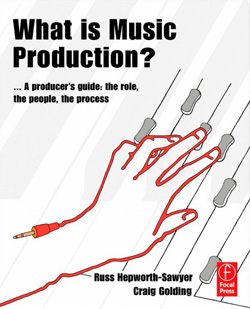
Getting The Take
The session has started, you’ve listened to the previously tracked parts a few times through, the vocalist knows the song, and all you need to do is get the vocal tracked and it’s in the can.
But how do you get “the take”?
This question can be asked of any instrument or part but for some reason the hardest track to be satisfied with is often the vocal.
This is possibly because the human voice is such a natural and expressive instrument that any inaccuracy or falseness will be identified more readily even by the least discerning of listeners.
If you’re fortunate enough to end up working with an artist or band that has great vocal abilities and has recorded before, then this process might not be as difficult as we are portraying here.
However, if the vocalist doesn’t have the best voice you’ve ever heard or hasn’t recorded a great deal before then, how do you go about capturing the best take?
If you think about what really affects a musician’s performance you will probably be able to come up with at least four or five different influential factors.
For example, the song’s meaning, the recording space or environment, their physical and mental state, and the people they are working with. What do you do when you’re actually in session and the red light is on?
Many engineers and producers we have spoken to have mentioned the word vibe. The problem with getting the vibe right is that it really varies depending on so many different factors.
However, there is a very commonsense way to approach this and at least get the basics right. Put yourself in their shoes; how would you feel standing in that studio’s live space or vocal booth singing that song? What would be the things that would bother or affect the way in which you perform?
Asking these questions should bring forward a number of things for you to consider and be aware of. (This could all be part of your preparation before you go into the studio for the session.)
As long as you are aware of potential issues, then that’s a good start. The specifics will be down to the individual vocalist themselves. For example, one may want the lights up, the other may want them dimmed or virtually off!
It’s whatever works in order to get the best take possible; the key is to be perceptive, open minded and creative.
The Vocal Take And Lyrics
When tracking the song and overdubbing the vocals, it can be hugely invaluable to have copies of the lyrics at hand. Ideally, photocopy or print off several copies. Consider using the highlighter technique when tracking vocals:
• Ask the artist to provide you with numerous (preferably typed) lyric sheets.
• Take three colors of highlighter.
• Use the first (lightest color) to denote any areas that have issues with them in the first take.
• Use the second lightest color on the same sheet to denote second-pass issues.
• Use the darkest color to do the same on the third pass. Using this method, you can quickly see the hot spots needing attention.
Keeping fast notes can relieve you to concentrate on drawing the best vocal performance possible from the singer. Simply cross out the lines as you comp that perfect take together.
